The atmosphere of your living room directly impacts your mood, wellbeing, and even your social interactions. As the heart of most homes, this versatile space deserves thoughtful design that balances aesthetics with functionality.
Whether your dealing with a compact apartment or a spacious open-concept area, these curated design strategies will help transform your living room into a stunning yet comfortable sanctuary that reflects your personal style.
According to a 2024 study by the American Society of Interior Designers, people who intentionally design their living spaces report 27% higher satisfaction with their home environment and experience improved mental wellbeing. The living room, being the most used communal space, has the greatest impact on this satisfaction rating.
Let’s explore twenty transformative ideas that combine timeless principles with fresh approaches to create a living room you’ll love spending time in.
Foundation Elements: Setting the Stage
1. Finding Your Color Story: Beyond Just Neutral vs Bold
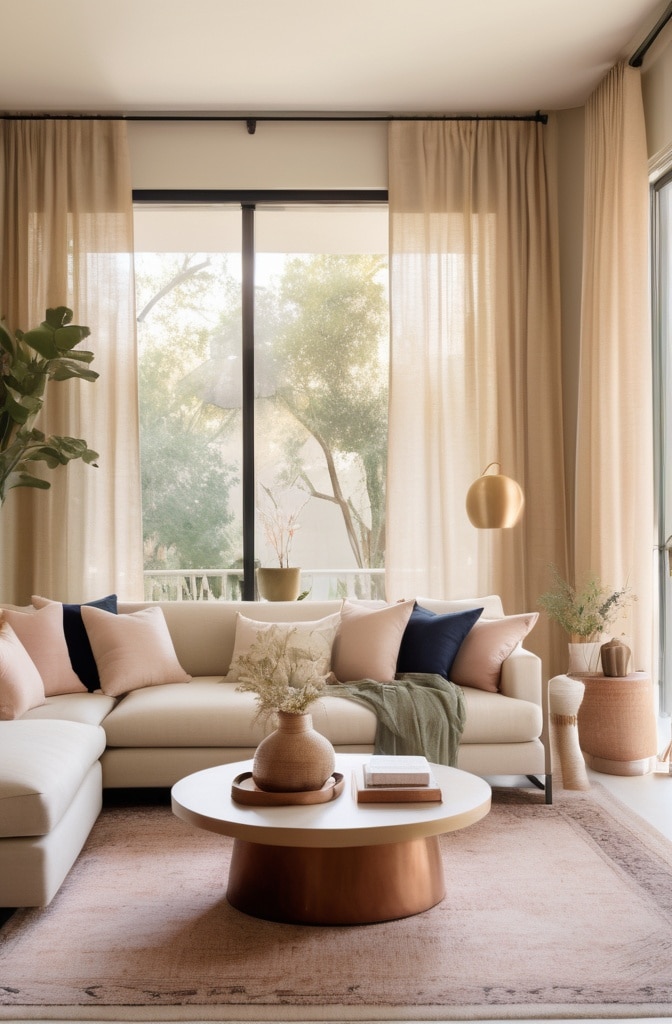
Colors affect our emotions in subtle yet powerful ways. Before grabbing paint swatches, consider how you want your living room to feel. According to color psychologist Dr. Angela Wright, “Color is the most powerful nonverbal communication tool we have. In living spaces, it directly influences our psychological state.”
Rather than blindly following trends, try this approach:
- Start with a mood board – Collect images that resonate with you to identify color patterns you naturally gravitate toward
- Apply the 60-30-10 rule – Use your primary color for 60% of the room (walls, large furniture), a secondary color for 30% (accent chairs, curtains), and an accent color for 10% (accessories, artwork)
- Consider light exposure – North-facing rooms benefit from warmer tones to counteract cooler light, while south-facing rooms can handle cooler palettes
“The most successful living rooms often combine neutrals with carefully selected accent colors to create balance,” notes interior designer Marcus Chen. “This approach provides longevity while still allowing personality to shine through.”
One often-overlooked strategy is to draw color inspiration from a beloved piece you already own—perhaps artwork, a rug, or even a throw pillow. This ensures your color story feels personally meaningful rather than arbitrarily selected.
2. Sofa Selection as Your Anchor Investment
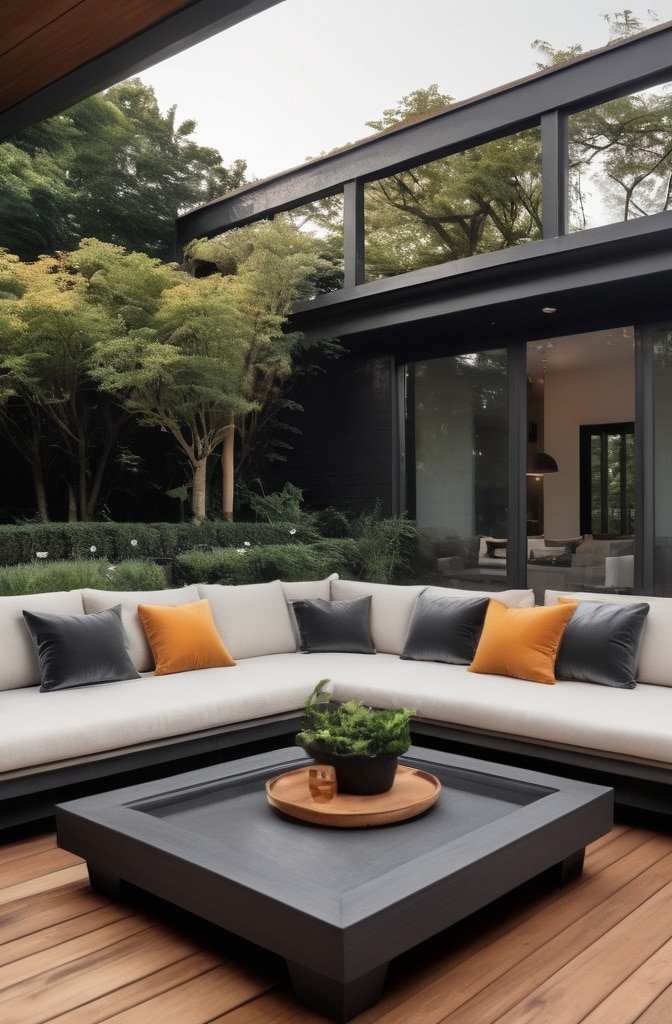
Your sofa represents both the largest visual element and typically the biggest furniture investment in your living room. Design psychologist Sally Augustin, PhD, explains, “A well-chosen sofa contributes significantly to psychological comfort in a space, not just physical comfort.”
According to 2024 durability testing by Consumer Reports, top-performing upholstery materials include:
- Performance fabrics (e.g., Crypton, Sunbrella) – 12+ years lifespan
- Full-grain leather – 15+ years with proper care
- Tight-weave polyester blends – 7-10 years
“The most common mistake I see is choosing a sofa that’s too large for the space,” says furniture designer Ana Martinez. “Always measure your room and doorways before purchasing, and consider a sofa’s ‘visual weight’ along with its actual dimensions.”
An emerging trend worth considering is modular seating that can be reconfigured as needs change—perfect for adapting to different social situations or future moves.
3. Layered Lighting Strategy
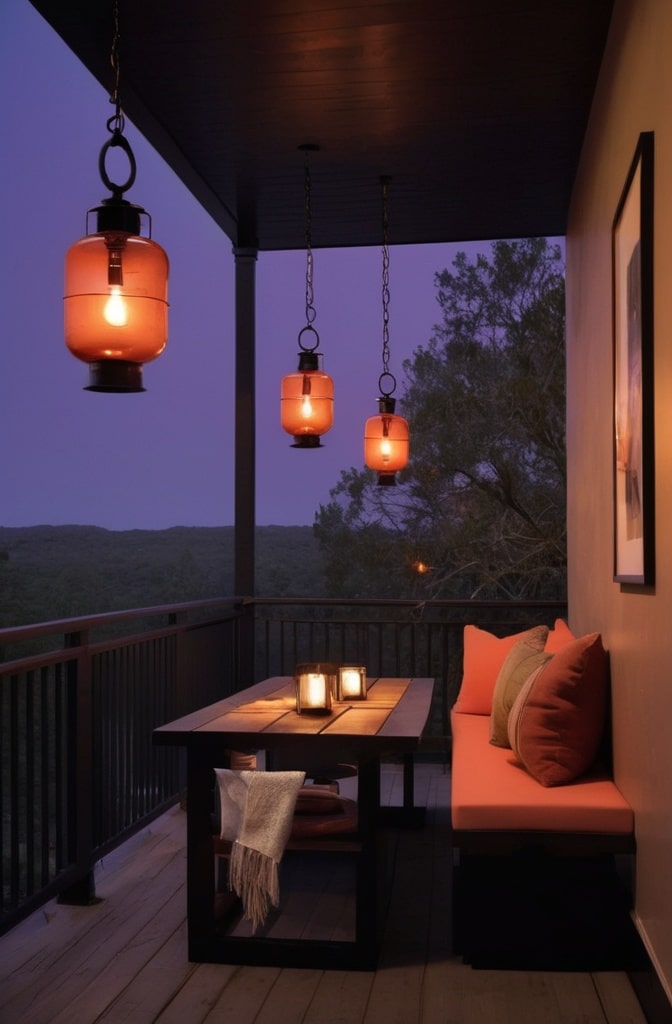
Effective lighting transforms a living room more dramaticly than almost any other element. Yet many homeowners make do with a single overhead fixture, missing the opportunity for nuanced atmosphere.
A comprehensive lighting plan includes:
- Ambient lighting – Overall illumination (ceiling fixtures, recessed lights)
- Task lighting – Focused light for reading or other activities (table lamps, floor lamps)
- Accent lighting – Highlights architectural features or art (picture lights, wall sconces)
“The goal is to create layers that can be adjusted throughout the day and for different activities,” explains lighting designer James Cooper. “Installing dimmers for all fixed lighting is perhaps the most impactful upgrade you can make.”
Smart lighting systems have become increasingly affordable, with entry-level options starting around $200. These systems allow you to program specific lighting “scenes” for different times of day or activities, automatically transitioning your space from energizing morning light to relaxing evening ambiance.
“Light creates ambiance and feel of a place, as well as the expression of a structure.” – Le Corbusier
Energy-efficiency deserves consideration too. The latest LED technology offers excellent color rendering (90+ CRI) while using 75% less energy than incandescent bulbs. Look for color temperature between 2700K-3000K for living spaces, which provides warm light similar to traditional incandescents.
4. Flooring and Rug Layering Techniques
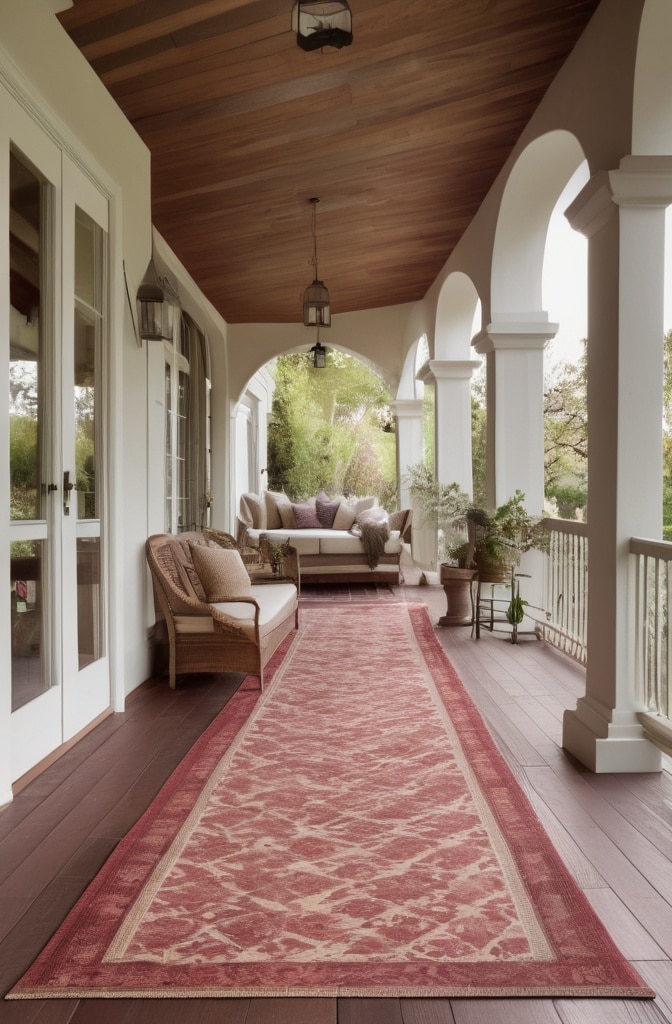
The foundation beneath your feet sets the tone for the entire room. Hardwood continues to dominate living room flooring preferences, with 65% of interior designers recommending it for its warmth and longevity, according to a 2024 National Association of Home Builders survey.
However, the strategic use of rugs adds comfort, defines zones within open spaces, and introduces texture. Interior stylist Emma Mitchell suggests: “Think of your rug as an art piece for the floor. It should complement your design scheme while offering practical benefits.”
For successful rug layering:
- Start with a larger, natural-fiber base rug (jute, sisal)
- Add a smaller, more colorful or plush rug on top
- Ensure the top rug is proportional (about 2/3 the size of the base rug)
- Anchor with furniture—at least front legs of major pieces should rest on the rug
An innovative approach gaining popularity is using carpet tiles insted of traditional area rugs. These modular squares can be arranged in custom patterns and easily replaced if damaged—ideal for homes with children or pets.
Style Directions: Finding Your Aesthetic
5. Modern Minimalism Without the Coldness
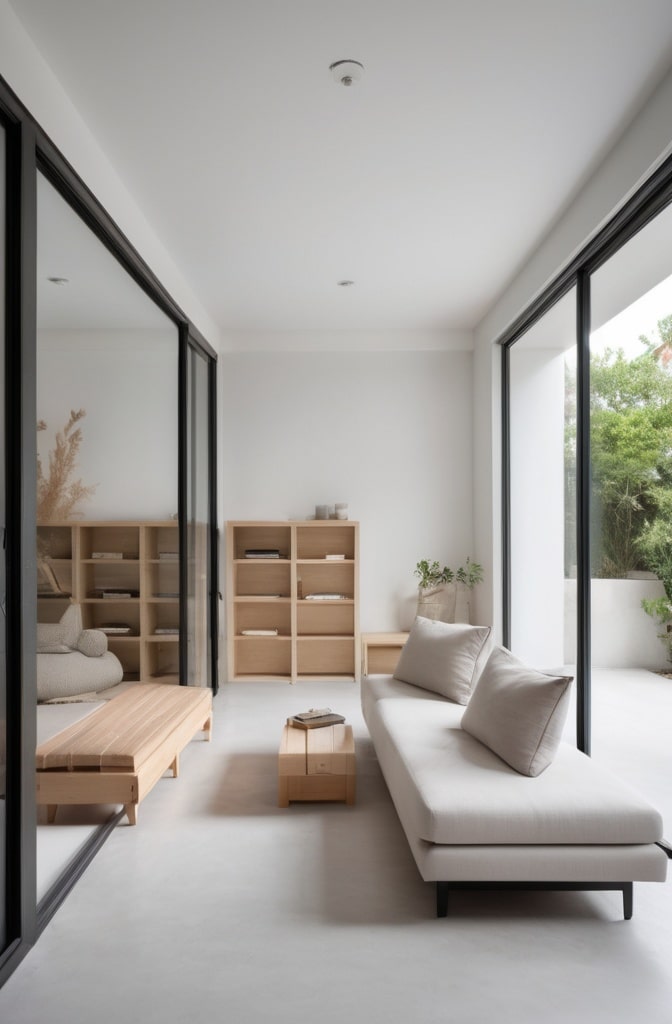
Minimalism doesn’t have to mean sterile. The key to warm minimalism lies in thoughtful curation rather than elimination for its own sake.
“Modern minimalism has evolved from stark white spaces to encompass rich textures and naturel elements,” notes architect David Lin. “The focus is on quality over quantity and meaning over arbitrary decoration.”
To achieve this balanced approach:
- Choose fewer but higher-quality pieces with excellent craftsmanship
- Incorporate varied textures through natural materials (wood, linen, stone)
- Allow for negative space to let rooms “breathe”
- Include personal items that bring genuine joy or meaning
Storage becomes paramount in minimalist spaces. Consider furniture with hidden compartments or built-in storage that maintains clean lines. Companies like BoConcept and Resource Furniture specialize in minimalist pieces with clever storage integration.
A study by Princeton University’s Neuroscience Institute found that visual clutter competes for attention, reducing focus and increasing stress. Minimalism counteracts this effect, creating spaces that feel calming and mentally restorative.
6. Industrial Charm for Urban Dwellers
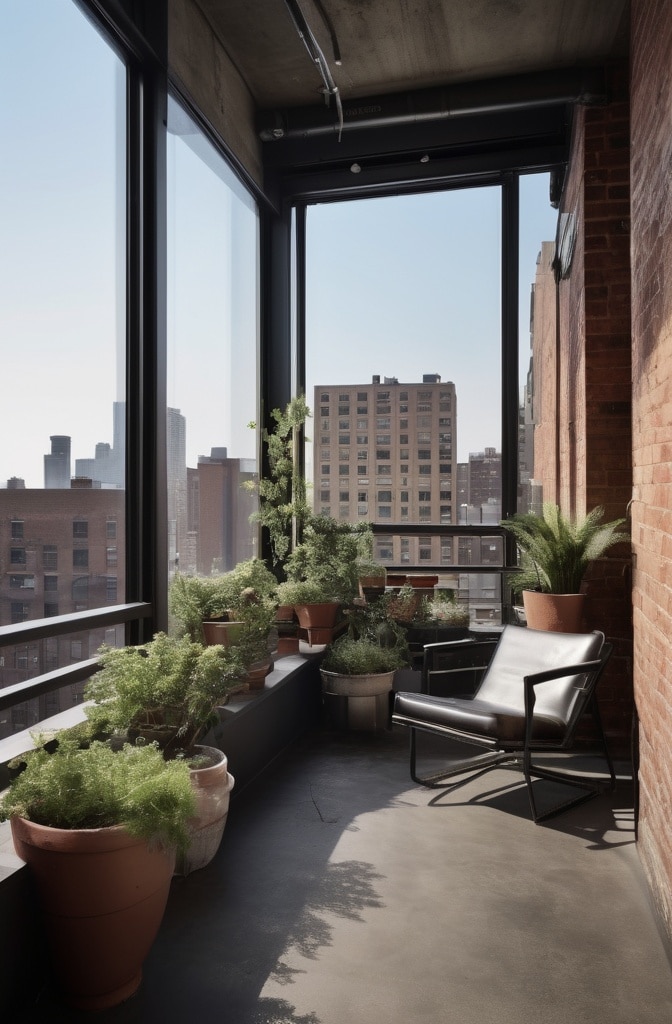
Industrial style celebrates the raw beauty of utilitarian elements, but the challenge lies in creating spaces that feel welcoming rather than cold or unfinished.
“The most successful industrial spaces balance hard elements with soft touches,” explains designer Rebecca Torres. “Look for opportunities to soften exposed brick, concrete, or metal with textiles and warm lighting.”
To achieve industrial balance:
- Mix raw materials with refined finishes
- Incorporate vintage industrial pieces with history
- Add warmth through wood tones and textiles
- Use plants to soften hard edges and improve air quality
Interesting applications include using metal room dividers that provide separation without blocking light, repurposing factory carts as coffee tables, or installing pipe shelving for display and storage.
For smaller spaces, industrial elements can be incorporated through lighting fixtures, hardware, or accent pieces rather than major architectural interventions—proving you don’t need a converted warehouse to embrace this aesthetic.
7. Mid-Century Modern Revival
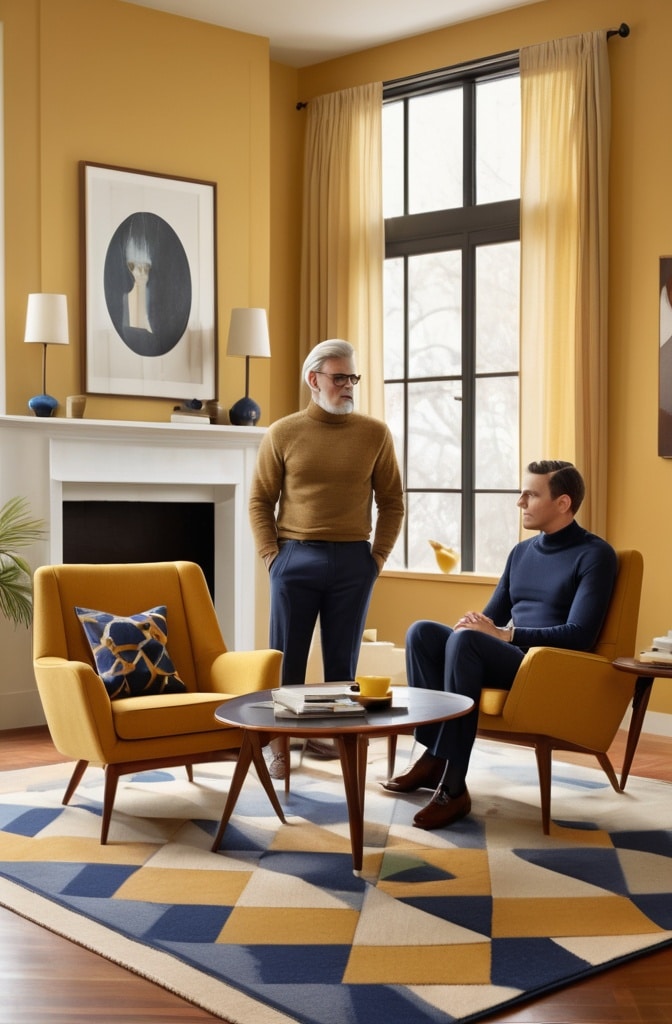
Mid-century modern design (roughly 1945-1975) continues its remarkable staying power due to its emphasis on functionality, clean lines, and integration with nature.
“What distinguishes authentic mid-century design is attention to human scale and honest materials,” says furniture historian Lisa Wong. “The best examples prioritize comfort alongside form.”
When incorporating mid-century elements:
- Look for signature characteristics: tapered legs, organic shapes, mixed materials
- Choose 1-3 statement vintage pieces rather than filling a room with reproductions
- Balance wood tones (particularly walnut and teak) with contemporary elements
- Draw from the original mid-century color palette: mustard, olive, orange, teal
Prices for authentic vintage pieces have skyrocketed, with original Eames lounge chairs now selling for $5,000-$7,000. However, many manufacturers offer licensed reproductions or pieces inspired by mid-century design at more accessible price points.
“The goal isn’t to create a museum or time capsule,” advises interior designer Miguel Sanchez. “Instead, honor the design principles of the era while incorporating contemporary needs and technology.”
8. Coastal Calm Without Clichés

Contemporary coastal style has evolved far beyond nautical stripes and seashell collections. Today’s interpretation focuses on creating the emotional experience of oceanside tranquility rather than literal beach references.
“Authentic coastal interiors capture light quality and textural elements found at the shore,” explains designer Elaine Harper, who specializes in waterfront properties. “The palette draws from sand, sea, and sky rather than predictable blue and white.”
For sophisticated coastal elements:
- Focus on light-enhancing strategies (mirrors, reflective surfaces, light window treatments)
- Incorporate natural materials with subtle texture (rattan, jute, weathered wood)
- Choose furniture with relaxed but refined silhouettes
- Add just one or two thoughtfully chosen seaside references rather than themed decor
A clever seasonal approach involves creating a coastal foundation with permanent elements (light walls, natural textures) that can transition between seasons with simple accessory swaps—bringing in deeper colors and cozier textures for fall and winter.
Read This Blog; https://hometranquil.com/dark-green-living-room-ideas/
Material Mastery: Texture and Substance
9. Wooden Element Integration
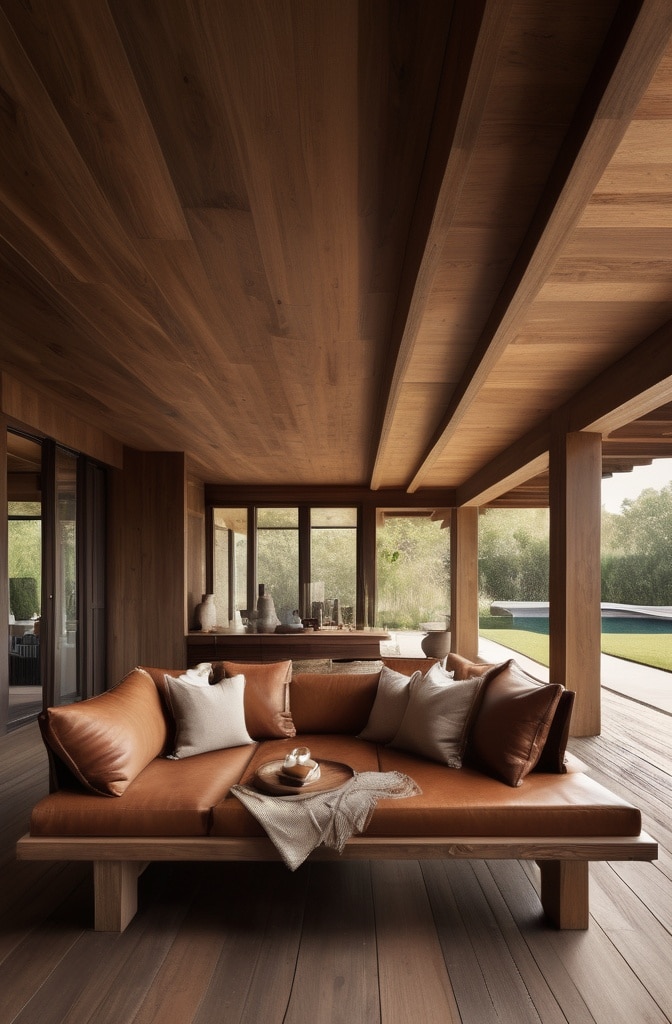
Wood brings irreplaceable warmth and natural variation to living spaces. The key to sophisticated wood integration lies in thoughtful contrast rather than matching sets.
“Mixing wood tones creates depth and interest,” says master carpenter Thomas Reid. “The secret is finding a common undertone or complementary contrast.”
Successful wood integration includes:
- Limiting a room to 2-3 different wood tones for cohesion
- Using undertones as a uniting factor (cool with cool, warm with warm)
- Creating contrast through varying finishes (matte, glossy, distressed)
- Incorporating unexpected wooden elements (carved art pieces, wooden light fixtures)
According to the Forest Stewardship Council, consumer demand for sustainable wood has increased 38% since 2020. When purchasing new wooden furniture or accents, look for FSC certification or reclaimed options that minimize environmental impact.
DIY options have expanded dramatically with the availability of wood veneer products that allow for custom wall treatments, furniture refinishing, or decorative accents without specialized skills or tools.
10. Metallic Accents for Dimension
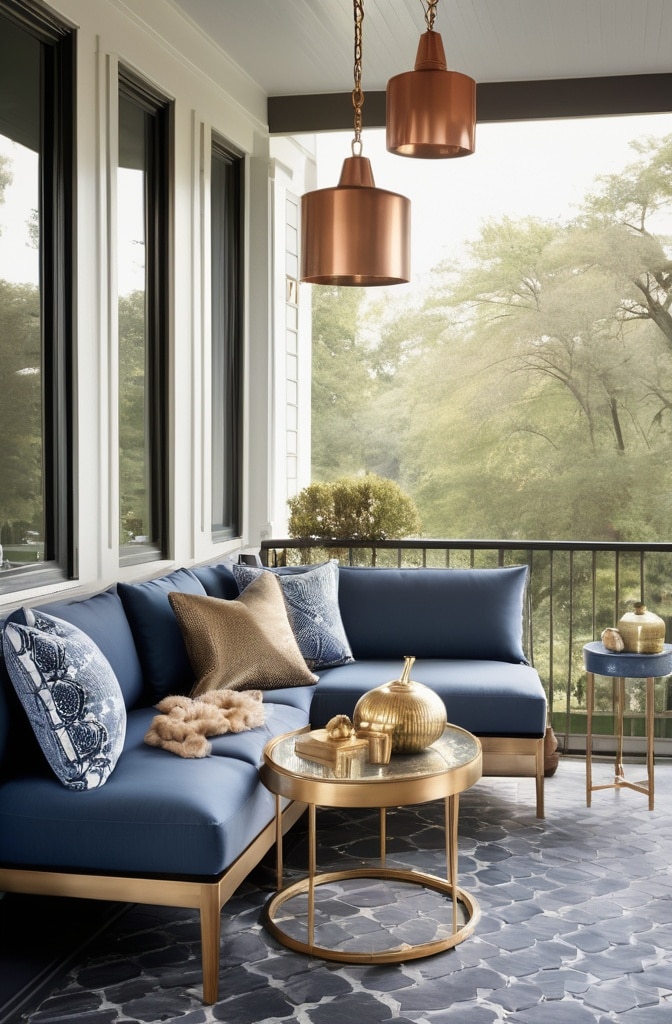
Metallics add reflectivity and visual interest that enliven any design scheme. The trend has shifted from chrome dominance to warmer options like brass, copper, and bronze.
“Metallics function as jewelry for your room,” says stylist Devon Chen. “They should enhance rather than dominate.”
For balanced metallic integration:
- Choose a dominant metal for larger elements (lighting, furniture)
- Add 1-2 complementary metals in smaller doses
- Vary finishes within your metal family (hammered, brushed, polished)
- Balance metallics with matte elements to avoid overwhelming shininess
A design rule worth noting: in rooms with less natural light, polished metals will help maximize light reflection, while matte metallic finishes create subtle sophistication in brighter spaces.
Sustainable options have expanded dramatically, with several furniture makers now using recycled aluminum and brass for eco-conscious consumers.
11. Plant Selection for Living Vibrancy
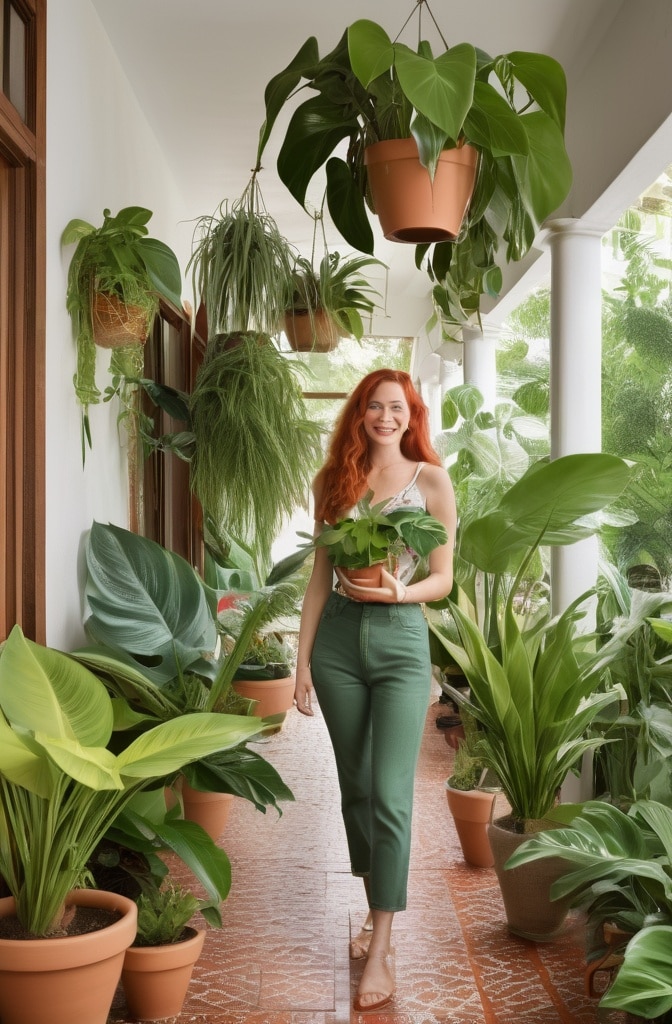
Beyond aesthetic contributions, indoor plants improve air quality and connection to nature. A NASA study found that certain houseplants can remove up to 87% of air toxins within 24 hours.
“Plants are the most accessible way to bring life into a room,” notes botanist and interior plant consultant Jamie Zhang. “Even those without green thumbs can find suitable options.”
For design-forward plant integration:
- Consider leaf shape, texture and color as design elements
- Group plants of varying heights for visual interest
- Choose architectural varieties for statement positions (fiddle leaf fig, bird of paradise)
- Use decorative containers that complement your design scheme
Low-maintenance varieties ideal for beginners include ZZ plants, snake plants, pothos, and various succulents—all tolerating irregular watering and varying light conditions.
Innovative display methods like wall-mounted planters, hanging installations, or built-in planters integrated with furniture create unique focal points while saving floor space.
12. Textile Layering Masterclass
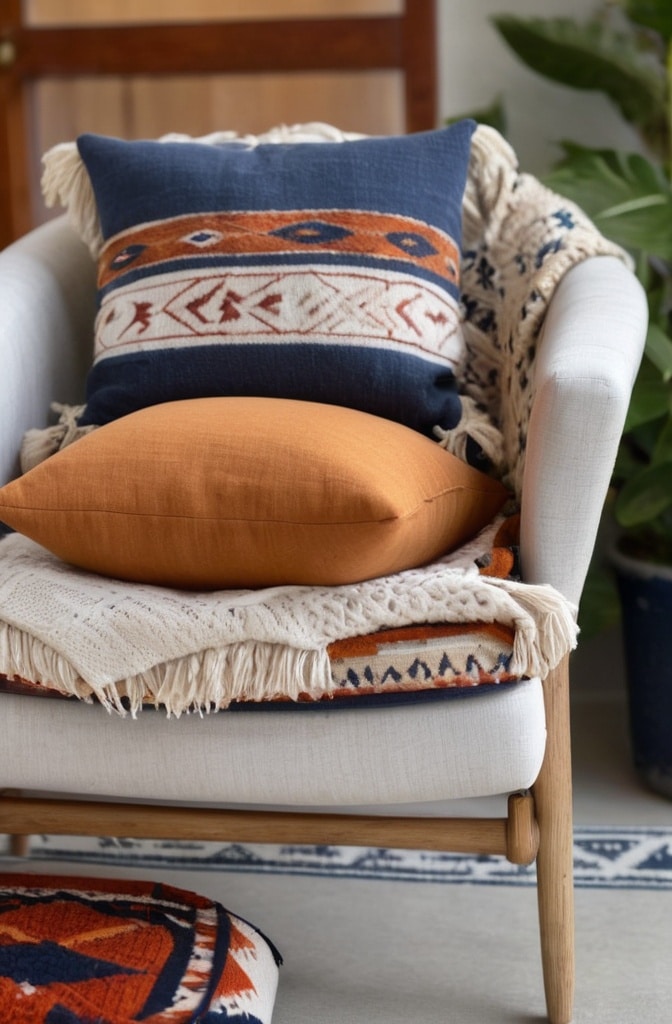
Textiles offer the quickest way to add comfort, color, and seasonal adaptability to living rooms. Professional stylists recommend a layered approach rather than matching sets.
“Textiles should engage multiple senses,” suggests textile designer Priya Agarwal. “Consider not just color and pattern, but also weight, texture, and how fabrics feel against the skin.”
For sophisticated textile layering:
- Start with a foundation of solid neutrals in larger pieces
- Add pattern through medium-sized elements (pillows, throws)
- Introduce 2-3 complementary textures (smooth, nubby, plush)
- Create seasonal rotation plans for easy refreshes
Investing in textile quality pays dividends in both appearance and longevity. Natural fibers like linen, cotton, and wool not only look and feel better but also age more gracefully than synthetic alternatives.
Global textile traditions offer inspiration beyond standard retail options. Techniques like Japanese shibori, Indian block printing, or Peruvian weaving bring cultural richness and artisanal quality to contemporary spaces.
Layout and Functionality Optimization
13. Furniture Arrangement for Conversation
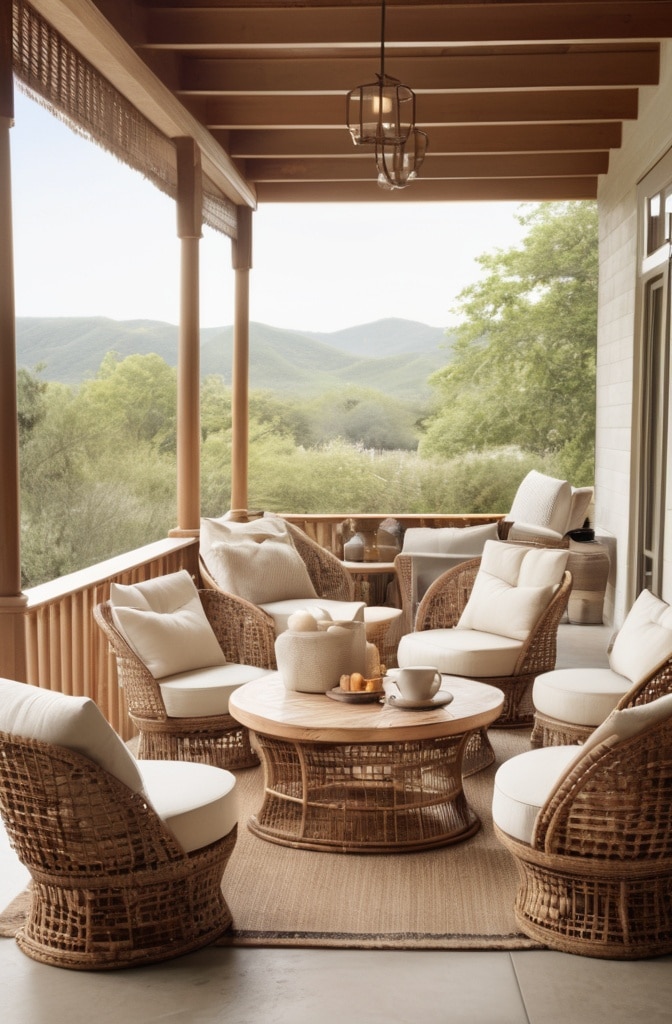
The most beautiful furnishings fail if they don’t facilitate human connection. Thoughtful arrangement creates spaces where conversation flows naturally.
“Furniture placement should prioritize interaction while respecting traffic patterns,” advises spatial psychologist Dr. Lily Bernstein. “The goal is configuration that feels intuitive rather than forced.”
Guidelines for conversation-friendly arrangements:
- Position seating no more than 8 feet apart for comfortable conversation
- Create a loose U-shape or H-shape with primary seating
- Ensure each seat has access to a surface for drinks/books within arm’s reach
- Allow 30-36 inches for major walkways through the room
For challenging room layouts, floating furniture away from walls often solves proportion problems. In open-concept spaces, area rugs and thoughtful furniture orientation create distinct zones without physical barriers.
Multi-functional pieces have evolved beyand basic sofa beds to include coffee tables with adjustable heights, ottomans with storage, and modular seating that reconfigures based on needs—all valuable for spaces that must serve multiple purposes.
14. Creating a Dedicated Reading Nook
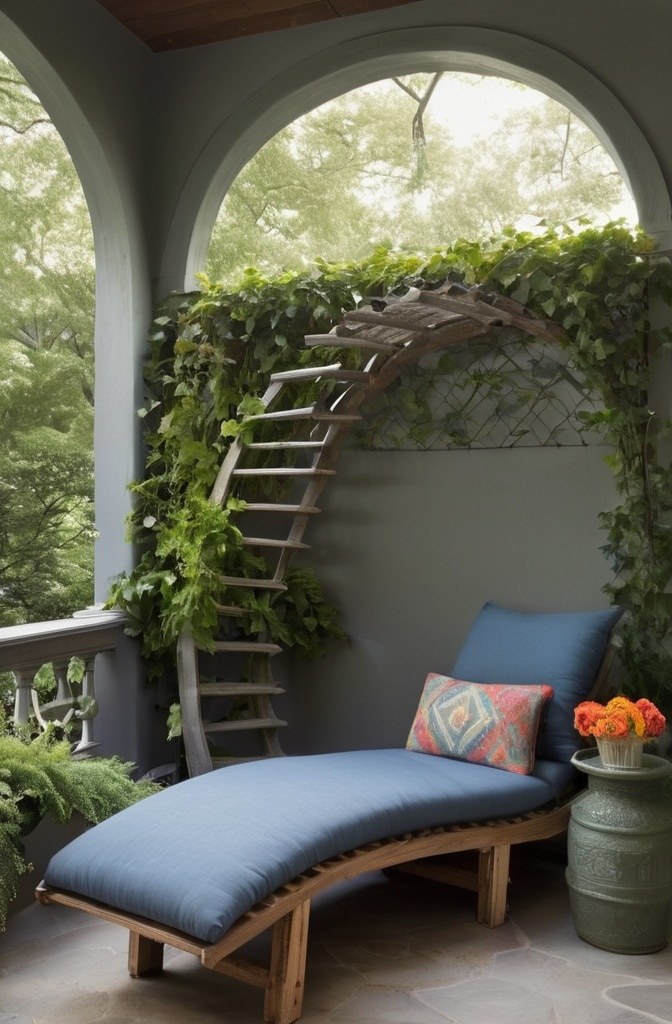
Even in modest living rooms, carving out a dedicated reading space creates a powerful invitation to unplug and recharge. These intimate retreats need surprisingly little square footage to function effectively.
“A well-designed reading nook becomes the heart of a living room—a visual promise of relaxation,” notes librarian-turned-designer Sam Watkins.
Essential elements include:
- Comfortable seating with proper support – Ideally with arms and room to tuck legs up
- Task lighting delivering 50-75 watts equivalent – Positioned to illuminate pages without creating glare or shadows
- Small surface for drinks/books – Within easy reach while seated
- Acoustic consideration – Some separation from high-traffic areas
For small spaces, window seats, corner arrangements, or even repurposed closets can become charming reading retreats. The key is creating physical and psychological separation from the main living area.
Book storage innovations worth considering include floating shelves that minimize visual weight, room dividers with integrated shelving, or vintage ladders repurposed as vertical book displays.
15. Built-in Features That Add Value
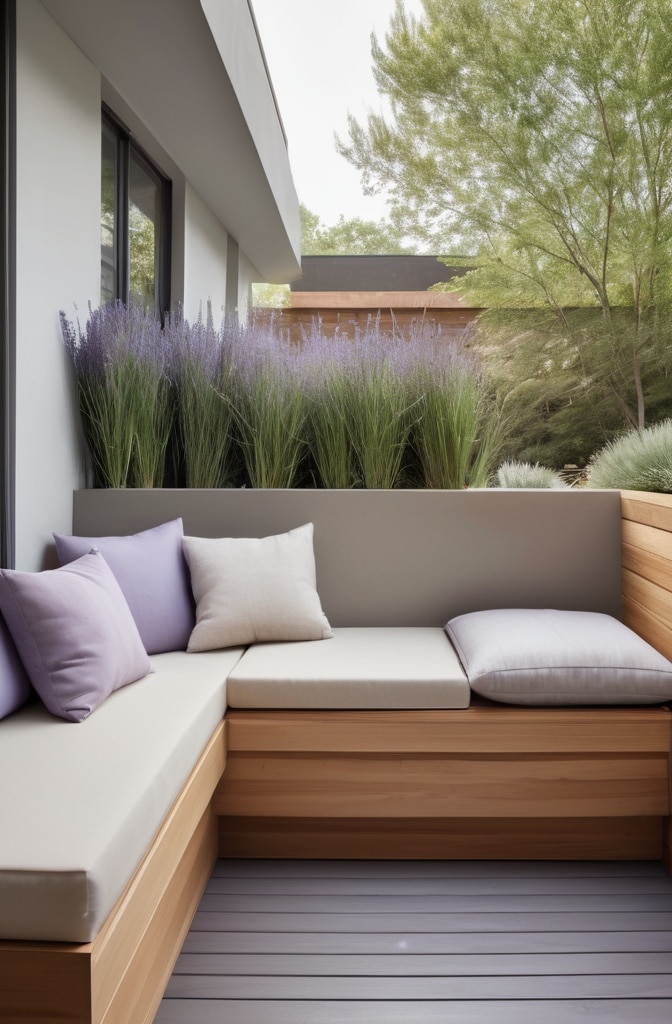
Custom built-ins represent the intersection of aesthetics and functionality, often becoming defining features that distinguish a home. While requiring higher initial investment, they offer significant returns.
“Well-executed built-ins can increase home valuation by up to 4%,” reports real estate analyst Morgan Chen. “They signal craftsmanship and permanence to potential buyers.”
Consider these built-in approaches:
- Floor-to-ceiling bookcases flanking focal points like fireplaces or windows
- Media walls that conceal electronics while providing display space
- Window seats with hidden storage beneath
- Custom cabinetry tailored to specific collections or needs
For rentals or budget constraints, “semi-built-in” options create similar visual impact. These involve combining freestanding furniture pieces (like IKEA’s BILLY bookcases) with trim work and strategic placement to mimic built-in appearance.
When planning built-ins, future-proofing deserves consideration. Adjustable shelving, accessible electrical outlets, and adaptable compartments ensure your investment remains functional as technology and needs evolve.
16. Mirror Placement Strategy
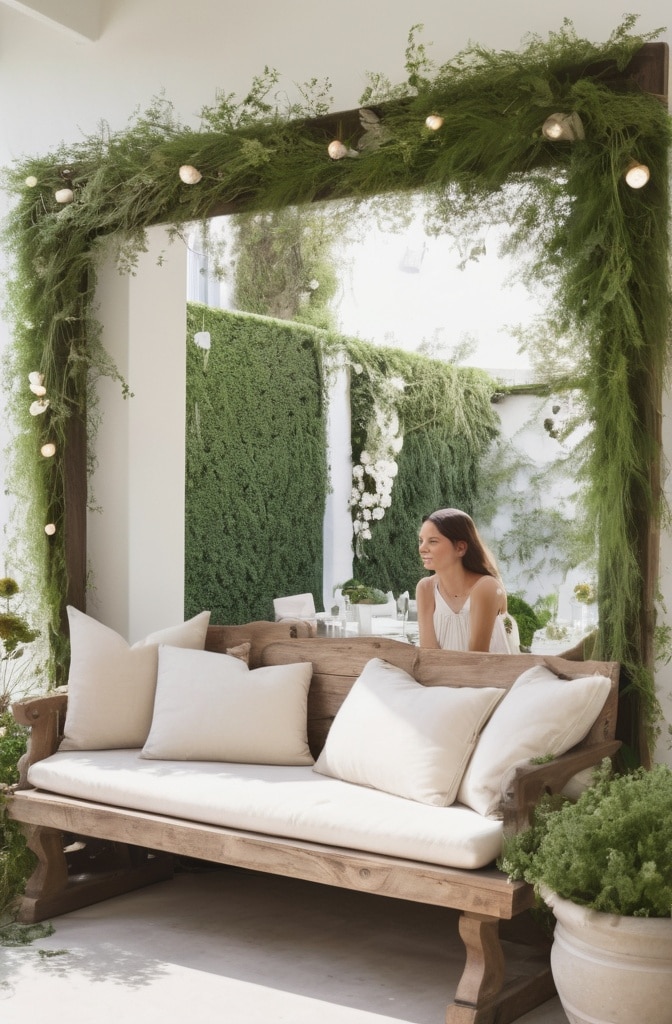
Beyond their practical function, mirrors influence perception of space, light, and proportion. Strategic placement multiplies natural light and creates visual expansion.
“Mirrors function as architectural elements when used intentionally,” explains designer Sophia Williams. “They can correct proportion issues or highlight a room’s best features.”
For maximum impact:
- Position mirrors to reflect light sources, particularly natural light
- Place opposite windows to create the illusion of another “window”
- Consider what the mirror will reflect—ideally something attractive
- Use oversized mirrors (leaning or mounted) to create dramatic impact
Interesting applications include grouping smaller mirrors gallery-style, using antiqued mirror panels for subtle reflection, or installing mirror backsplashes in built-in shelving to add depth and brightness.
Custom mirror solutions have become more accessible through online fabricators who create made-to-measure pieces at reasonable price points, allowing for personalized shapes and sizes.
Personalization and Finishing Touches
17. Art and Photography Display Techniques
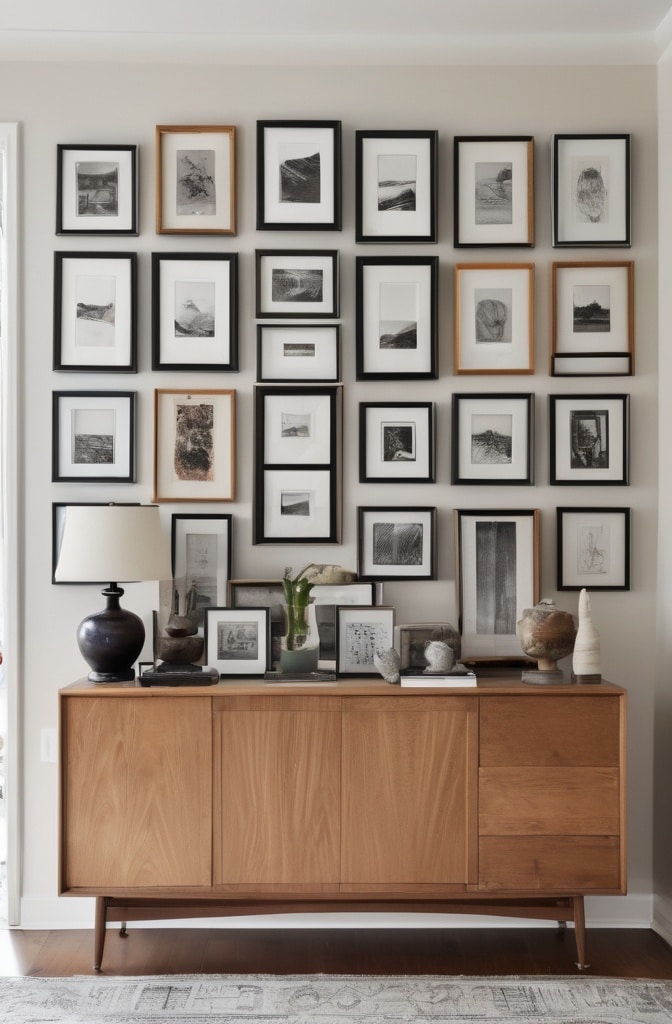
Thoughtfully selected and displayed artwork transforms living rooms from generic to deeply personal. The most successful displays reflect genuine interests rather than decorator formulas.
“Art should spark joy, conversation, or contemplation,” suggests gallery curator Marcus Lee. “The emotional connection is always more important than matching your sofa.”
For impactful art displays:
- Gallery walls – Mix frames and content types while maintaining one unifying element (frame color, subject matter, or color palette)
- Statement pieces – Allow a single large work breathing room (minimum 8″ space around)
- Sculpture and dimensional art – Incorporate unexpected surfaces for display (wall niches, floating shelves, coffee tables)
- Rotation systems – Consider slim storage solutions that allow seasonal art rotation
Budget-friendly approaches include framing vintage maps or botanical prints, displaying children’s artwork in quality frames, or supporting emerging local artists whose work isn’t yet commanding premium prices.
For rental spaces, adhesive hanging strips, picture ledges, and easel displays offer damage-free alternatives to traditional hanging methods.
18. Fireplace Styling Across Seasons
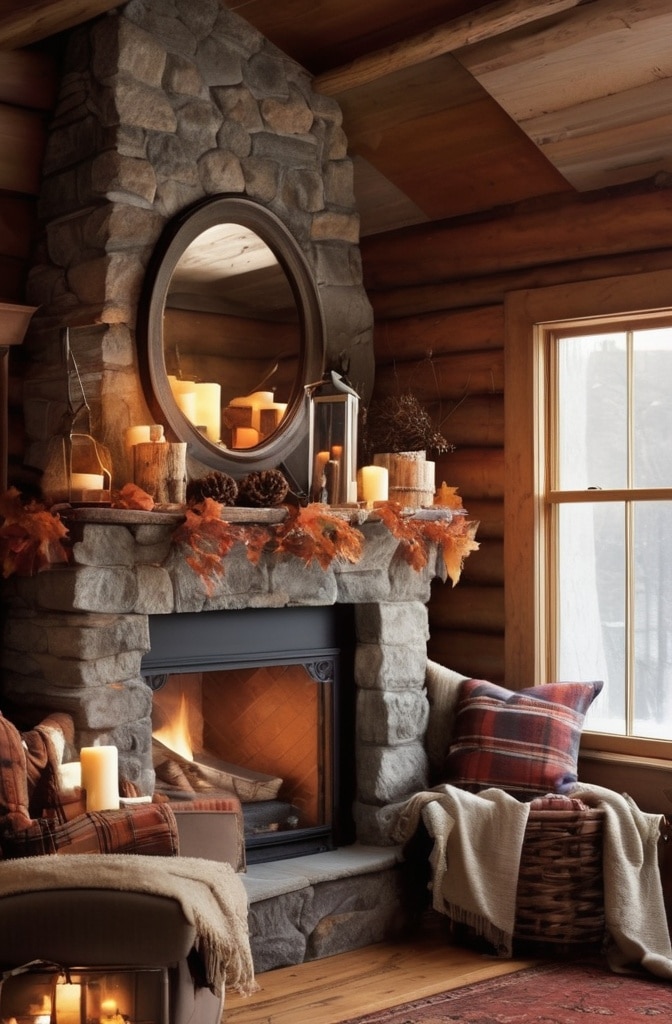
Traditional or contemporary, working or decorative—fireplaces naturally draw attention and anchor living spaces. Their styling deserves seasonal consideration.
“Fireplace styling should reflect both the architecture of the surround and the current season,” advises home stylist Claire Donovan.
Year-round strategies include:
- Winter – Layer candles, textural objects, and warm metallic elements
- Spring – Incorporate fresh or quality faux botanicals and lighter accessories
- Summer – Create negative space with fewer, carefully chosen objects
- Fall – Add organic elements like wood, ceramic, and deeper colors
For non-working fireplaces, creative alternatives include candle groupings, book displays, or even small indoor gardens taking advantage of unused space.
Safety considerations remain paramount, particularly in homes with children or pets. Maintain a 3-foot clearance from combustible materials, use fireplace screens, and ensure proper ventilation for wood-burning fireplaces.
19. Vintage Integration for Character
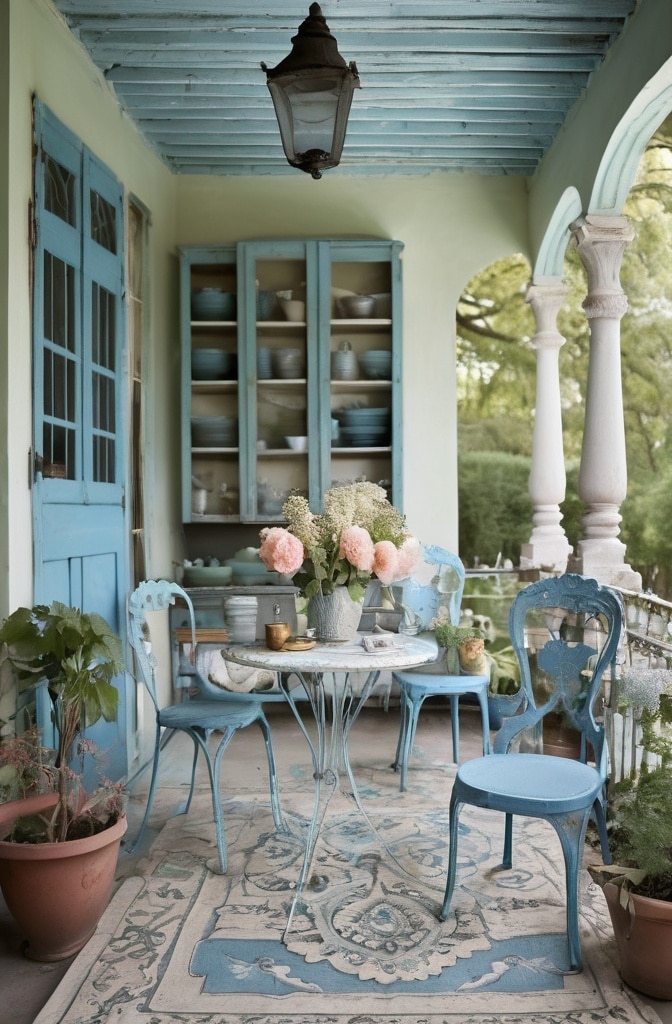
Thoughtfully selected vintage pieces add history, character, and sustainability to contemporary living rooms. Unlike mass-produced items, they bring unique stories and craftsmanship.
“Vintage pieces create instant soul in a space,” notes antique dealer Thomas Wang. “They interrupt the newness of contemporary interiors in the best possible way.”
When incorporating vintage elements:
- Look for quality construction indicators (dovetail joints, solid wood, hand-tied springs)
- Consider unexpected vintage categories (scientific instruments, maps, industrial objects)
- Balance with contemporary elements to avoid the “time capsule” effect
- Invest in proper restoration for significant pieces
Beyond traditional antique stores, today’s vintage hunters find success through estate sales (now often advertised online), Facebook Marketplace, specialized Instagram sellers, and even neighborhood alerts through apps like NextDoor.
For those concerned about fabric cleanliness, professional cleaning services now offer specialized treatments for vintage upholstery, or consider reupholstering quality frames in contemporary fabrics.
20. Accessorizing Without Clutter
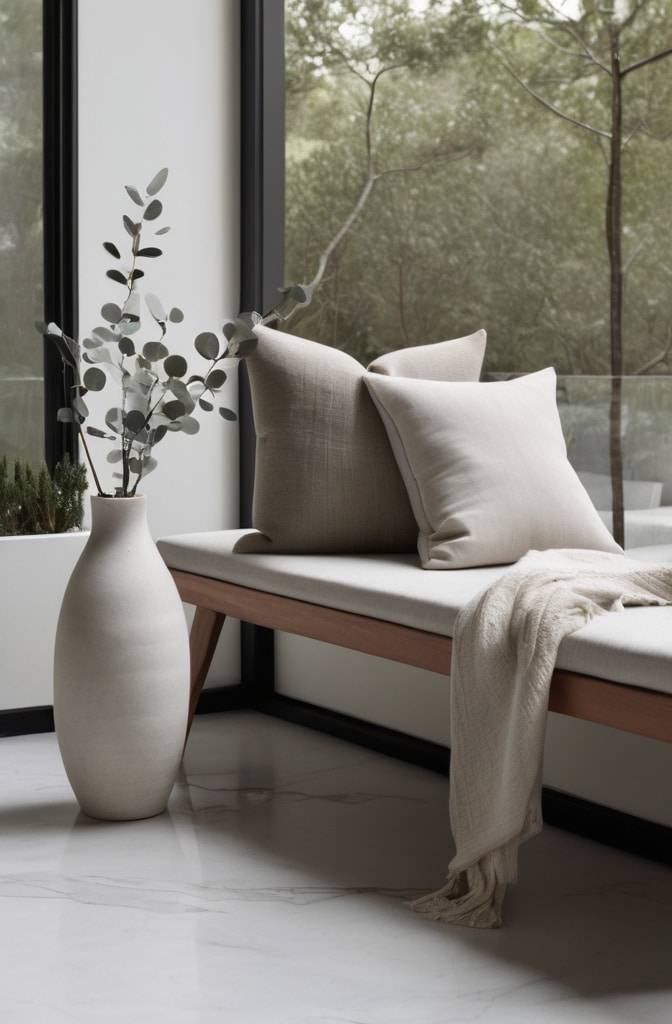
The final layer of living room design—accessories—requires perhaps the most restraint. These smaller elements should contribute purpose and personality rather than merely filling space.
“Edit ruthlessly,” advises minimalist designer Mei Chen. “Every accessory should earn its place through beauty, function, or meaningful connection.”
For purposeful accessorizing:
- Follow the rule of odd numbers (groups of 3 or 5 typically look more dynamic than even numbers)
- Vary heights and shapes within groupings
- Create negative space around objects for visual breathing room
- Implement the “touch test”—regularly handle each item to eliminate dust collectors
Sustainable accessory sources worth exploring include artisan marketplaces like Etsy for handmade items, vintage shops for one-of-a-kind finds, or natural elements like interesting branches or stones collected personally.
Seasonal refresh strategies might include a dedicated storage box containing seasonal accessories that rotate quarterly, keeping your space dynamic without requiring significant investment.
Conclusion
The most successful living rooms reflect their occupants’ authentic needs and preferences rather than rigidly following design rules or trends. As interior designer Nate Berkus wisely notes, “Your home should tell the story of who you are, and be a collection of what you love.”
When implementing these ideas, consider a phased approach:
- Start with foundational elements (color, major furniture pieces)
- Address functional needs (lighting, storage, seating arrangement)
- Layer in personality and finishing touches over time
This methodical approach allows for budgeting major investments while creating spaces that evolve naturally rather than feeling hastily assembled.
Remember that the ultimate measure of success isn’t how your living room photographs, but how it functions for daily life and special moments. A truly great living room supports connection, relaxation, and the activites that matter most to you.
We’d love to see how you implement these ideas in your own space! Share your transformations in the comments below or tag us on social media using #StylefulLivingRoom.
